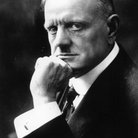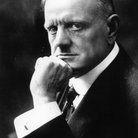Sibelius: Symphony No.2 - Full Works Concert Highlight of the Week
Jane Jones tells how Sibelius went from sunny Italy to freezing Finland.
In February 1901, Sibelius is relaxing, enjoying a holiday in Italy after a string of successful conducting jobs across Europe. In his temporary study at the villa in Rapallo, the composer has the time to dream up a new narrative for his next work which he thinks might be a tone poem. So, in these early stages, the second symphony isn’t even a symphony! Inspired by his surroundings, Sibelius fantasises about the story of legendary womaniser Don Juan. His diary reveals his midnight jottings for his character. “I was sitting in the dark in my castle when a stranger entered. I asked who he could be again and again — but there was no answer. I tried to make him laugh but he remained silent. At last the stranger began to sing—then Don Juan knew who it was. It was death.” Alongside this musical scenario, Sibelius jots down the musical notes which would form part of the symphony’s second movement – a theme which is later interpreted as an overt political statement by the composer.
Those political ideals were far from the composer’s thoughts in the warmth of an Italian spring but by June, he was back home and Don Juan’s story had been forgotten as the composer realised he had enough material for a full length symphony. Throughout the summer and autumn of 1901 as Sibelius worked on his symphony, the political situation in Finland became increasingly tense. By the time of the premier in March 1902, it was inevitable that Sibelius’s new work would be received against the background of the nationalist struggle for independence against Tsarist Russia. It was an overwhelming success.
The opening movement of the second symphony is a close as Sibelius gets to the pastoral symphonic ideas of his hero Beethoven. The famous three note motif which runs throughout the work is gentle, light and optimistic, but the sunny feel of the first movement gives way to a very different mood in the second. Remember that imagined meeting with death for Don Juan? Well, it’s now become a darkly threatening theme, interpreted as ‘the most crushing protest against all the injustice which today threatens to take light from the sun’, banishing the warmth of the opening movement from the remainder of the symphony. The third movement scherzo seems to rush towards the triumphant finale whose heroic, stirring music left the Finnish audience in no doubt that Sibelius had composed the soundtrack for independence. Sibelius rejected that programmatic idea, but Finns themselves declared that this was the ultimate musical expression of their culture, history and political ambition.
Whether you’d prefer to think of Don Juan visited by Death or the birth of an independent nation, you cannot resist the driving force of the symphony. The Finnish conductor Osma Vanska acknowledges that the second symphony is connected with his nation’s fight for independence, but he says ‘it is also about the struggle, crisis and turning point in the life of an individual. This is what makes it so touching.’









